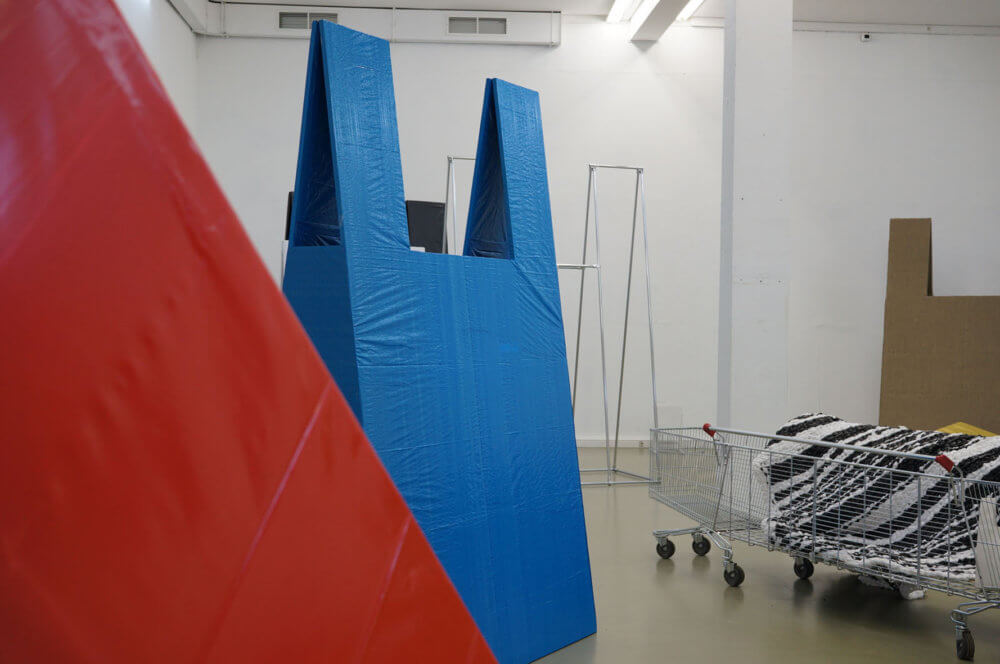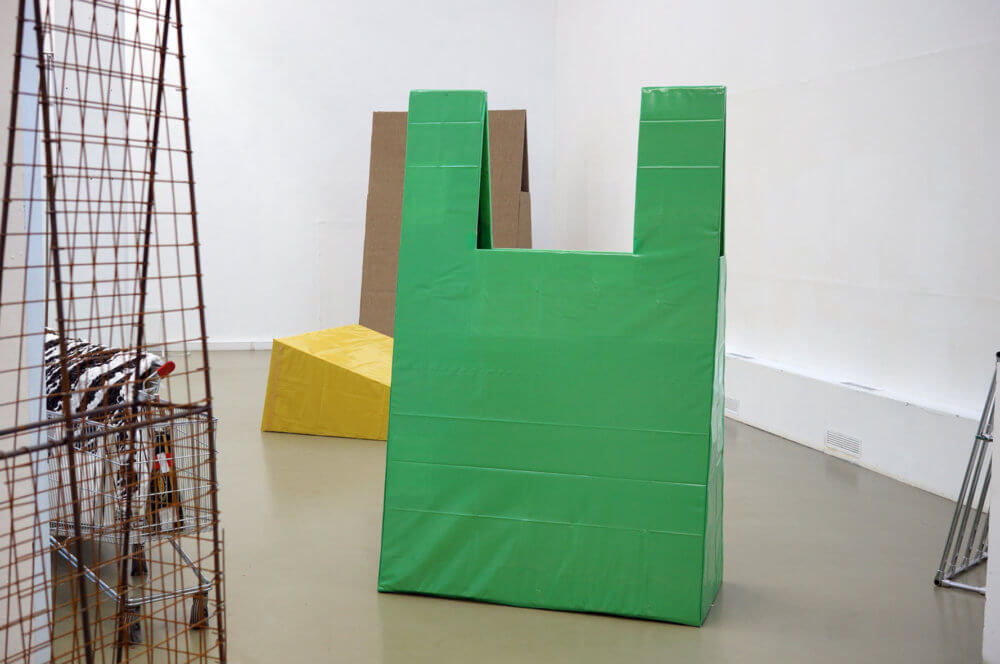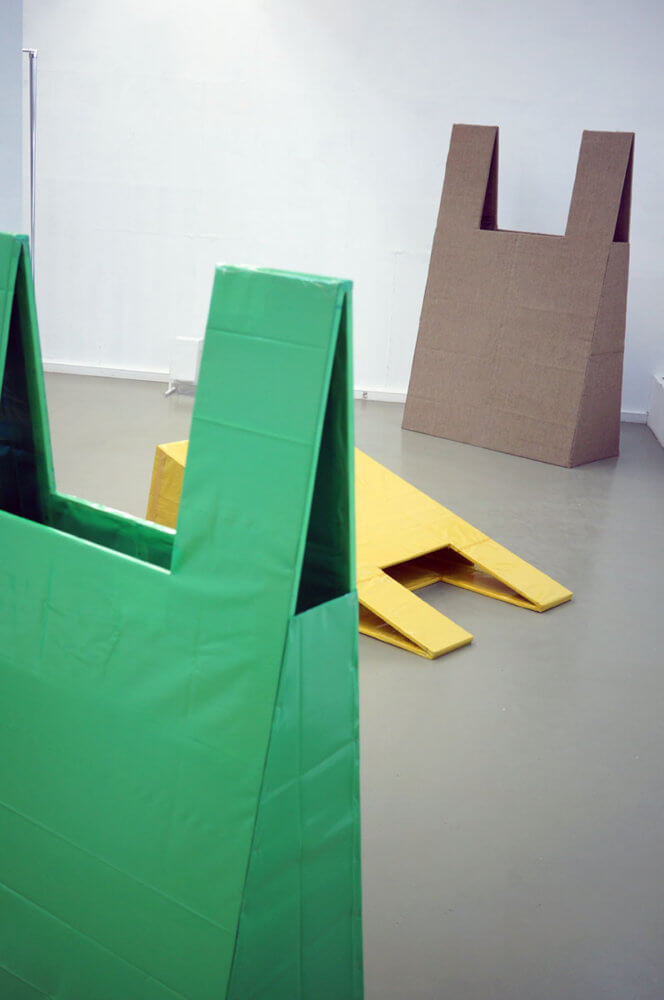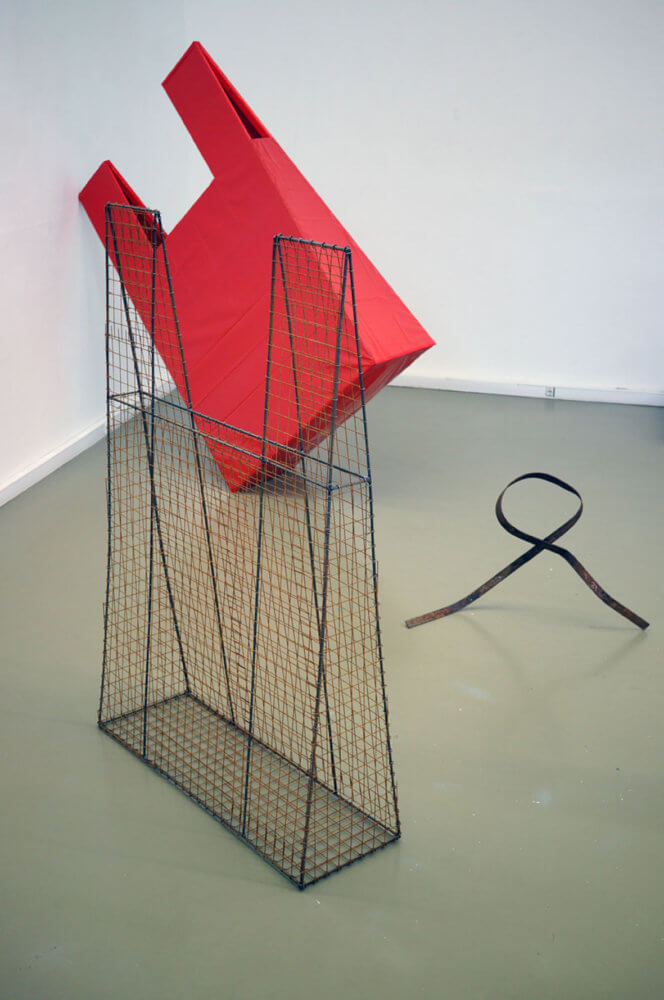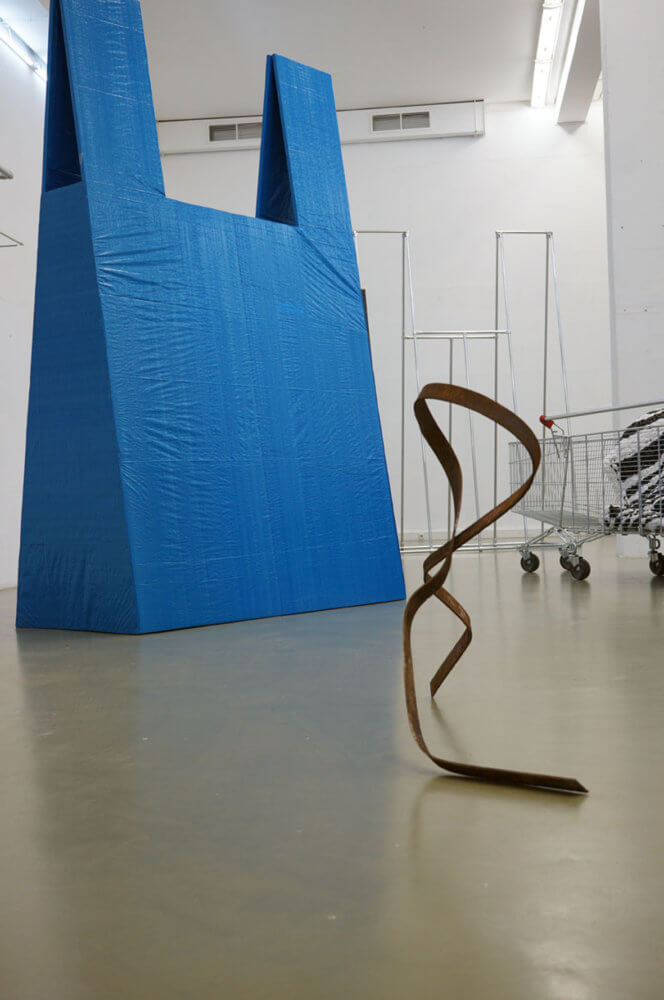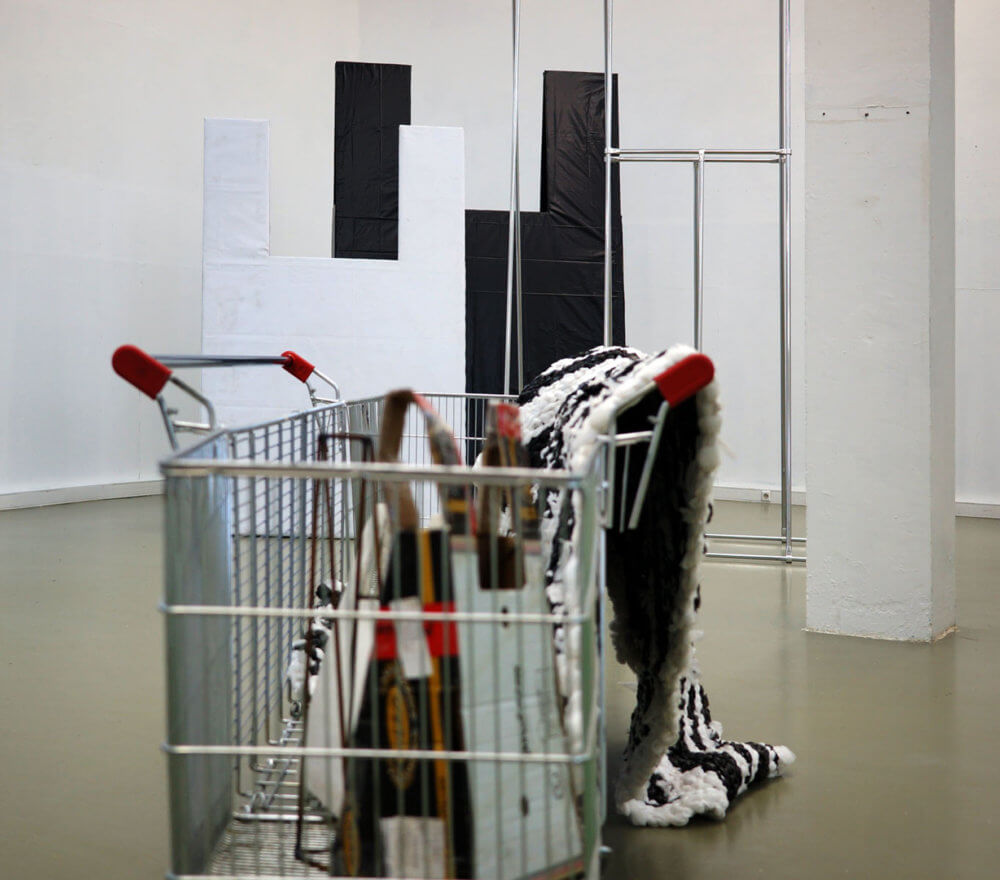Gone Shoppin’ be Back in 5 Min.
2013
XL Gallery
The artist has gone shopping. Meanwhile, the ordinary everyday items start changing: they grow to an immense size; they shrink, stick one onto another and fall into pieces, doing everything possible to prevent their appropriate usage. The scale changes both the optics of the glance and the nature of those faithful companions of consumer’s life. It’s as if a sudden pressure loss would happen in a plastic universe of shopping malls and multiplexes, chain caf?s and mobile stores, cozy as they are in their own way, and the things would start swallowing up the surrounding space, succumbing to the negative pressure of the void.
If we accept the idea that everyday objects are a crystallization of social relations, then the sculptures by Alexander Povzner are like icebergs. The gaze of a wayward sailor glides past their indifferent outlines, hoping to see a gap, to find an escape from his polar captivity. But an echo of sublime melancholy is almost indiscernible against the background of the signs of consumer reality, their presence being as self-confident as it is illusive. Still, it is no easier to escape from it than to find a way out of an ice maze, since neither the consumer paradise nor the installation space can be seen from the outside.
A plastic bag, a shopping cart—as staple and featureless as these commodities are, they are still key elements of each consumer’s private logistics. If one forgets about the functions of these objects, one could try to contemplate them aesthetically as separate entities; but Povzner captures their inner nature. Each small everyday item has a monument sleeping within: a monument to social interactions, the production of needs and desires, and personal utopias. But one can only notice this from a distance, with a certain degree of detachment, by overcoming the gravity of the conventional.
Alexander Povzner’s sculptures also reveal an ethical position. Formerly, the demand of real materials in real space used to metaphorically bring a better world nearer. In the consumer society, utopias are portable: the real space within them is pierced with schemes, plans and stratagems, and the time is ruled by deadlines, timeshares and scripts. The artist’s actions within this system are like gaps in information streams, or pauses breaking the regular rows of seconds, hours, and weeks. In these gaps, the presence of objects turns into a silent critical statement. Thus, the system finds its limit in an event hidden in its own trace, like coal pieces frozen inside plaster, waiting for the moment when a reversed time stream will once again ignite them with a spark.
Stas Shuripa
